Presented below is an updated transcript of a talk given at the at the Senate House in London on March 11, 2014 by viaLibri founder Jim Hinck. It was part of the monthly “Second Tuesday” Book Collecting series organised by the Institute of English Studies (London University) and the Rare Book Society.
The talk was originally given as a powerpoint presentation and has been rewritten and updated here for use as a text document. The update has also been used as an opportunity to clarify some of the content and make other needed improvements, both in style and substance. The original talk also included extensive notes on how to use viaLibri to help build book collections. Those have been removed from this paper for use later as part of a document with advice on the best ways to use viaLibri to build collections and find books.
Taste and Technique in Book Collecting – An Update for the Digital Age
My objective here tonight is to explore some of the ways in which the practice of book collecting has changed during the last few years or decades. In particular, I want to look at the impact that digital technology has had on the ways people find and collect books. To help with that I think it will be useful to look at an earlier era in book collecting, one that was definitely pre-digital, and use it for comparison with the practices of book collecting as we know it today.
To guide me I will lean heavily on a book entitled TASTE AND TECHNIQUE IN BOOK-COLLECTING written by this man

John Carter, in 1947.
If you haven’t already read it I would highly recommend that you do so, even though it is already over 70 years old. Or read it again, as I did, after over 30 years. I think I could feel safe arguing that it is the best-informed and most influential general study of book collecting published during the last century.
It is also very convenient for my purposes because it reflects, with remarkable clarity, the shared viewpoints of most of the prominent collectors of its day. It is an ideal source for examining the practices of pre-digital collectors. Its text is based on the Sandars Lectures in Bibliography given by Carter at Cambridge University during 3 days in the winter of 1947. The Sandars Lecture series began in 1895 and continues to this day. Selection is an honour for any bibliophile, but in Carter’s case it was especially notable, since it marked the first time in the 50+ year history of those lectures that a bookseller had been chosen to read.
I suspect he did not miss of the significance of that event, but I wonder if he was also aware, as he was reading his lecture to the audience of fellow bibliophiles assembled in the Arts School, that not far away, in the Mathematics Laboratory, work had just recently begun on what would, two years later, become the world’s first practical stored-program electronic computer.
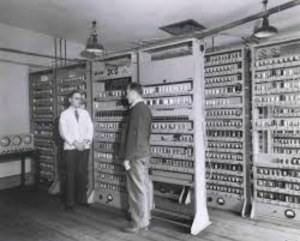
Its name was EDSAC and its design became the basis for the world’s first computer built specifically for commercial use. Thus, within walking distance of where Carter was reading his lectures on book-collecting, the digital age was in the process of being born. To a contemporary observer those two activities could not have been more unconnected. The passage of time has, I think, proven otherwise.
Who was John Carter? Relative to the topic at hand he certainly passed through the right places. Eton. Kings College, Cambridge. Scribner’s (where he served as the British representative of their important rare book department in New York ) and, finally, Sothebys. He also wrote with originality and authority on a variety of topics related to bibliography and book-collecting.
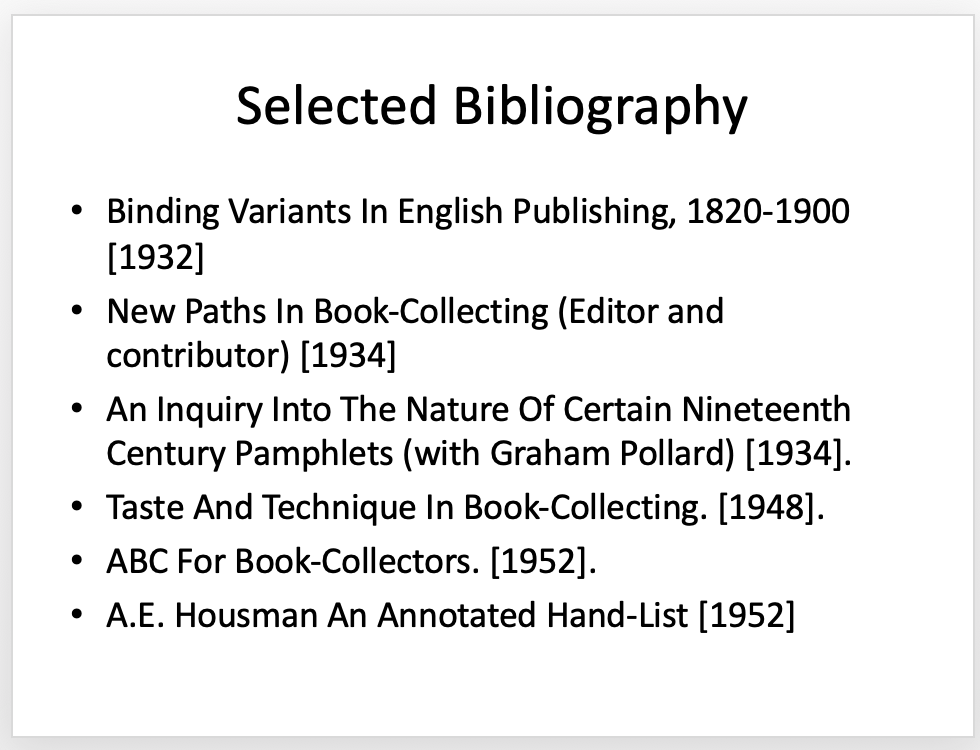
This list demonstrates the wide range of Carter’s interests and expertise. All the books shown here were successful enough to be republished at least 20 or more years after their first publication. His ABC For Book Collectors is, in fact, still in print. His authority on the subject is hard to challenge. So if we need a guide who can show us what book collecting was like at the dawn of the digital age I think John Carter should be our man.
His three days of Sandars lectures filled over 200 pages in the printed book. I can only consider a small portion of that here. To make the most of my time I will concentrate on three areas where, in my view, the most significant changes have since occurred. They are also areas where the arrival of some aspect of digital technology will be readily seen as contributing to that change.
The first of these would be the idea of connoisseurship. Carter refers to it continuously throughout his Sandars-based book. In some places the exercise of connoisseurship becomes almost synonymous with book-collecting itself.
Here is what he has to say about it in his introduction.
(In book-collecting) some degree of connoisseurship or expertise is always present; it is in fact what the mathematicians call, I believe, a constant in the equation. Some may think the word connoisseurship has a snobbish sound, and I would use a four letter Saxon equivalent if such existed. All it means is the ability to distinguish good from bad, the significant from the commonplace, in the same kind, with some concomitant satisfaction in the exercise of that ability.
Distinguishing “good from bad” is thus essential to connoisseurship, and the personal satisfaction derived from knowing how to make that distinction was central to why Carter-era book collectors collected.
Moreover, connoisseurship is exercised in choosing what areas to collect as well as deciding which copies of books within those areas to purchase or reject.
With regard to what areas the connoisseur should collect it was easy for Carter to spell them out. The areas where one should collect were basically the areas where collecting was already actively taking place. These centered, in particular, on English literature. Where there were differences between collectors these mostly revolved around which periods to concentrate on and whether to focus on poetry, prose or drama. Carter did, however, also acknowledge a recent and growing interest in books on science and philosophy. He approved of this, but only within limits that we will explore later.
On the other hand, there were areas of collecting which Carter definitely felt did not meet the requirements of connoisseurship. He spells them out when he offers his guidance to novices, who were particularly susceptible to interest in these inferior categories of book.
Fine printing (or, in the jargon of the trade, “press books”) and modern firsts always claim a substantial share of the attention of newcomers with no firmly fixed affections. The reason is obvious: moderns provide a comparatively inexpensive proving ground for those inclined to first edition collecting, while a fine book – and sometimes, alas, even simply a pretentious book – commends itself readily to many who neither do, nor ever will, care a button for a first edition.
Color plate books and handsome (again, often showy rather than strictly fine) bindings appeal in just the same way to those whose purses are a little longer but whose first steps are equally tentative and equally liable to that necessity for justification (whether to themselves or others), freedom from which will only be achieved when the novice has ceased to be a novice.
I don’t want to challenge this opinion, however outdated it may seem to us now. I don’t think it was Carter’s personal prejudice, but more generally the prejudice of his generation. What he says here would have found agreement from many of the noted collectors of his time, especially those who aspired to the status of connoisseur.
But we need to think about why this was the case, since I believe it goes to the heart of what makes a book important and worthy of collecting.
To offer an explanation Carter goes on to describe what he sees as the natural progression from novice to connoisseur.
It is therefore very natural and a very common cycle that begins with books which please the eye, progresses to books which excite the imagination as well, and ends by eliminating physical considerations altogether.
He goes on to tell us that the market for press books and colour plate books is governed by the periodic arrival and departure of “less sophisticated and more ostentatious collectors.” Their fluctuating interests also respond, in turn, to fluctuations in the larger economy.
To support that contention he calls on his friend Percy Muir, who is quoted as follows: “anyone well informed on book-collecting history could venture a shrewd guess at the state of the money-market from the current price of a Kelmscott Chaucer.”
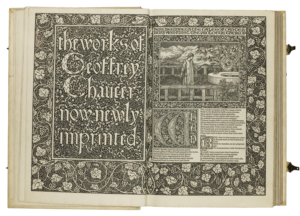
Carter discouraged interest in a subject which we know is of great interest to the bibliophiles of today: the book considered as a physical object or work of art. The physical aspects of books do come under consideration, but chiefly in connection with the demand of collectors for books in original condition. The physical attributes of books are generally ignored as desirable features on their own merits.
As we know, modern tastes have changed;
But let’s return to 1947. Having learned what the beginning collector should avoid, Carter also let him know the things that he should pursue. To be of interest to a connoisseur, we are told, a book must fall into one of two simple categories.
One is books of Imagination. The other is books of Thought.
Under the heading of imagination we find works of literature and not much else.
At the beginning of Taste and Technique we are given a short history of book-collecting before the 20th century. There we learn that almost everything that interested the true bibliophile of the previous era was literary in nature. These were works created by imagination in the author, and appealing to it in the reader.
Carter’s personal collecting interests were pretty well focused on these works of imagination, and he regarded this area as the first and most important area where collections could be built. But he did also acknowledge an increasing interest in books on science, philosophy, economics and politics. These he categorised separately as works of “Thought.”
In 1947 this trend was still regarded as something new. He traced its origins to the late 1920s. That was when the London firm of Elkin Matthews first began publishing catalogues which included early books on these subjects.
Of course, there were other booksellers who also sold books in these categories and did so well before Elkin Matthews got involved. And there were customers who bought from them. But Carter excluded these earlier buyers from the ranks of genuine book collectors and regarded them merely as “specialist collectors.” They were definitely not connoisseurs. That their books might have a practical interest, and that their appeal was “strictly technical,” put them out of consideration.
What Elkin Matthews did to change this, at least as Carter explains it, was to raise the prices and present the books, for the first time, to a new audience that previously had not considered them to be worthy of attention. The idea was that a bibliophile should never actually have a use for his books. Possession was the only proper motive for collecting.
Carter knew the attitudes of his age and I would not question that he described them properly. But my own experience is that those attitudes have long since ceased to prevail and that the collectors who also make use of their books are no longer dismissed by the trade. At least I hope not.
But there is another interesting thing to note here. Apparently the rapid growth of collector demand for books in the category of science rather than literature was a cause of some alarm among collectors of the old school.
Carter felt obliged to reassure them. “The critics” he proclaims, “can console themselves with the reflection that as thought never yet caught up with imagination, no more will Volta with John Keats.”
Here are the two gentlemen in question…
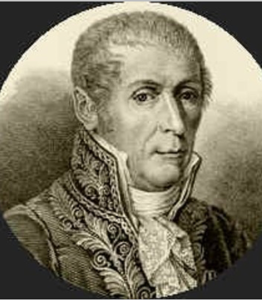
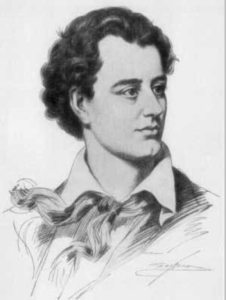
Now I ask you: Is this is a fair fight? Is Alessandro Volta the best representative for Science that Carter could enlist?
Yet more to the point: Do we still think that the great works of science can never surpass those of literature in the estimation of collectors. Carter was certain that they couldn’t, but I think the digital age has its own opinion on that subject.
Another issue I find to be of interest is the notable recent changes in attitudes towards Rarity. In his ABC For Book Collectors Carter had this to say:
“Rarity is the salt in book-collecting. But if you take too much salt, the flavour of the dish is spoiled; and if you take it neat it will make you sick. Similarly, those book-collectors who exalt rarity above any other criterion tend to develop third-degree bibliomania, which is a painful and slightly ridiculous ailment”
In Taste and Technique the chapter devoted to rarity covers 35 pages. It is broken down into 5 categories accompanied by 8 different “factors” which may be used to assess them. In spite of all the attention paid to it, however, the impression you get is that, in Carter’s eyes at least, rarity really isn’t all that important.
He has something similar to say elsewhere in Taste and Technique: “Absolute rarity lacks any significance without demand, and a single copy of a book is more than enough if no one wants it.”
What he is saying here is, in fact, a commonplace that is repeated in virtually every guide to book collecting I have ever read. I learned it as a novice bookseller over 35 years ago and accepted it as gospel ever since. Rarity, I was told, amplified demand; but it did so only where an interest in the book already existed. Rarity alone could not create interest in an otherwise ordinary book.
Until very recently I think this might have been true. But I don’t think it is true any longer. In today’s marketplace for old books the notations “Not In OCLC” and “Not in COPAC” have a powerful effect on the acquisitiveness of collectors and special collections librarians. And why shouldn’t this be the case? A book for which only a single known copy exists is a book that is only one fire or flood away from being lost forever. Suppose, instead, that we were looking at a moth or a wild flower that was in danger of extinction. I would imagine that such a moth or flower would have a special value, at least in the eyes of an entomologist or botanist, that might exceed that of other more successful or interesting members of its species. To a bibliophile, books should be no different. There can be very few, if any, printed books that do not fall within the collecting scope of some library or collector somewhere, and when such a book presents itself as unique, or at least unavailable for anyone to see or use, then it will almost certainly be desirable to someone.
The catalogue you see illustrated below was published in 2008 by my friend and colleague Stuart Bennett.
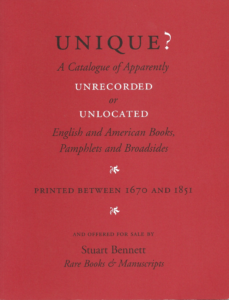
It was his 5oth catalogue, in honour of which he offered 50 books and printed items, all of which were unique or unrecorded.
An entry in OCLC, COPAC, ESTC, BLC, NUC or any known bibliography disqualified a book from appearing here. Needless to say, none of the items were ever included in a list of the 100 Most Important this or that. There were no issue points to consider, but the buyers could be confident that each entry was the finest copy available at any price. The prices ranged from $175 to $30,000, and I am assured that it was a success.
So far at least, Stuart has shown no symptoms of the painful or ridiculous ailment that Carter warned us of. Nor have any outbreaks been reported among his customers. I think this catalogue was a brilliant thing to do, but I also have to wonder what the reaction to it would have been if it had been issued in 1947 instead.
Muffled laughter, perhaps.
Or perhaps a bit of concern for the future solvency or sanity of the bookseller who put so much effort and expense into compiling a catalogue of expensive books that no one had ever heard of.
But in reality, a catalogue like this could not have been done in 1947. The main tools for creating and vetting it – OCLC, COPAC, ESTC – were still decades away.
Stuart’s catalogue is an unmistakable child of the digital age.
So I think we should look at some of the ways in which modern attitudes towards rarity have changed.
“It is much easier to tell a fine copy from a poor one than a rare book from a common. All that is needed for the former is a little experience and a pair of eyes. The latter requires not only much more experience but also a nose, which is a feature denied to many very conscientious and deserving book-collectors.”
What does this tell us?
It tells us, among other things, that in 1947 the judgement of rarity depended on the experience of booksellers, and not much else. This was obviously a serious limitation. The opinions of booksellers were, of course, subjective. But beyond that, they were dependent on experience. Where well-informed opinions on rarity existed, they were naturally limited to books in areas that had been attracting collectors for many years. Otherwise, no one would have paid attention to them and there would have been no reason to notice whether they were rare or not.
A consequence of this was that experienced booksellers had a vested interest in keeping their best customers well occupied within the boundaries of the well established areas of collecting interest. Wandering off the beaten path also meant collecting in categories where reliable advice about rarity might not exist and professional expertise was thus significantly devalued.
That has, of course, changed. Reliable information about what is common, and what is not, can be easily gathered online from a variety of sources. Sources available to all of us.
Carter makes another distinction that we will want to consider. He points to two types of rarity: absolute and practical.
Absolute rarity relates to the total number of surviving copies of a book anywhere in the world, including in libraries and private collections. With time and effort it can be measured by a census.
Practical rarity, on the other hand, is a function of frequency in the marketplace. For Carter, only practical rarity has any real interest to the collector. In combination with an estimation of general demand, it helps tell him how much to pay for a book.
But in 1947 it could only be measured – poorly – by looking backwards. Since practical rarity is a creature of the market place, it is also subject to variation within the marketplace. The interests of collectors do change. As they do so, the sought after books that seemed rare ten years ago may have become significantly less so today.
An index of practical market rarity did not exist in the pre-digital age. But it does exist today. When collectors go searching for something on viaLibri and find there an accumulation of yesterday’s proclaimed rarities it contributes to a reasonable scepticism regarding the reliability of practical rarity as judged by experience only.
It also strengthens the perceived value of items which are found to be rare in absolute terms, especially since a form of absolute rarity, as recorded in online library catalogues, can now be measured using objective tools. These tools are, of course, digital and easily accessible from a device you can put on your desk or carry in your pocket.
Carter also had definite views on the question of originality in collecting.
This subject comes up in the final two pages of the chapter in Taste and Technique entitled “Reflections on the Present State of Book-Collecting.” They seemed remarkable to me when I read them again recently and I cannot forbear quoting them here at length.
“…although I have been, and remain, a proponent of idiosyncrasy, a warm supporter of the unusual approach in book-collecting, I have detected in myself and have sometime suspected among my book-collecting friends a tendency to a certain esotericism of taste which is analogous to, and is indeed sometimes allied with, that conscious virtuosity in technique to which I referred earlier.”
It is amusing, it is usually instructive, it is often of genuine public interest to collect something which no one else collects, provided it is worth collecting…
Yet there is a risk, however small, that this sort of thing may lead to a rather introverted condition if it is undertaken by a beginner or as anything but a sideline even by a moderately experienced collector. The parerga of experts are dangerous examples, and King Charles’s head has too often been found at the end of some intriguing little avenue of specialized enthusiasm.
We should thus note that the idea of specialisation is linked with danger. Here is where it can lead:
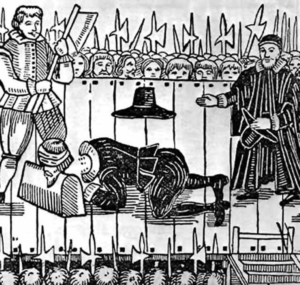
Then, further down, he tells us..
Bibliophily in its broader aspects is a sociable and an emulative pursuit, and many a promising special line has gone sour on the collector himself because his interest could not survive the profound and persistent disinterest of his fellow-collectors. “No man,” said Donne, “is an Iland intire of it self; every man is a peece of the Continent, a peece of the maine.” Similarly only an eccentric can exist comfortably in a private vacuum of his own creating. And if individuality of taste is pushed too far, it becomes eccentricity, just as unconventionality of technique can degenerate into preciosity.
What do we make of this today?
We will remember that Carter was the editor and driving force behind the publication of the anthology entitled New Paths In Book Collecting. He regularly stressed the need for developing new fields of collecting interest. These were needed to replace older established categories where the supply had become exhausted by the collectors of previous generations.
So why does he seem to be urging otherwise in his comments here? To explain this an important distinction must be made.“New Paths” are one thing. They are given to the collector, fully vetted and ready to follow. They are safe. But the collector who imagined he could discover a new path on his own was in danger and needed to be discouraged.
Why?
I see at least one reason that will interest us. It was alluded to earlier. It is the fact that, according to Carter, book-collecting is, above all, a social activity.
For that reason, building a collection that fellow collectors could not understand and, need we say, be impressed with, was a path to foolish, expensive and disappointing failure.
You see, the true collector is a clubman; or at least he was when Carter knew him. We have this explained to us shortly after his lengthy warnings regarding the dangers of originality. Early in the following chapter he spends several pages admiring the recent proliferation of book-collectors’ clubs. America was particularly blessed in this regard. These clubs played an important role in the “technique” of book-collecting, which is discussed in the second half of his book. However bookish the enthusiasms of their members, these clubs were, above all else, social in nature.
Carter affirms this. He holds it to be their primary virtue. A truly idiosyncratic collecting interest, however bibliophilic its focus, did not contribute to the sociability of these groups. Lone wolves, he warns us, “ queer ideas.” “No man is an island” he tells us. But what does this mean?
If he is a true book collector it means he should keep his collecting confined within the already commonly recognised boundaries of bibliophily and connoisseurship. He should learn from and follow the collectors who went before him and share his own experiences with his congenial contemporaries. He must stay connected with the maine.
He may, of course, pursue New Paths, and is even encouraged to do so, but they should be paths that have already been surveyed and approved. He should also not travel these paths alone.
And above all he should avoid the lure of a bibliographic terra incognita where there are no bibliographies, or even hand-lists, to guide him.
In Carter’s day the wise collector was not an island.
He was…

a sheep.
And the bookseller was his shepherd, leading him to green pastures, where he would not make a fool of himself in the company of his less adventurous peers.
But perhaps we should consider the possibility that this was, in fact, good advice – at least for the time in which it was offered.
Imagine that, in 1947, you suddenly decided that you wanted to collect books. Suppose also that you had no particular interest in literature or science or any other field where fellow collectors would already be active and the established expertise of booksellers would already be at your disposal.
Suppose that, instead of being a sheep, you wanted to collect books about them.
Suppose, for example, that wool was your passionate interest and that you wanted to create a great book collection about it.
Wool has played an important roll in the advance of civilisation. It seems like an imminently suitable thing to collect. But how would you go about it?
In 1947.
If you were very fortunate and, like Carter, lived in an old and large metropolis like Carter’s London then you would have had numerous excellent book shops to visit.
Your first visits to many of them could have been quite fruitful and left many happy booksellers in their wake. Even follow-up visits to some of those shops might have yielded a few more pleasing purchases, as the more enterprising booksellers, in the wake of your initial visit, extracted from their storage a few additional items that, before your appearance, had seemed useless to display.
But these back rooms would soon be exhausted. And the new finds would be reduced to a trickle.
You would probably follow the advice of the several manuals on book-collecting you had read, and would soon seek out the help and expertise of booksellers with particular experience in rare books on wool.
But while many might be able to quote from memory the issue points for Oliver Twist or Paradise Lost, you would find few, if any, who could identify the author and title of more than a handful of significant books on wool.
At this point you might turn your attention to the catalogues of book auction houses where the collections of dead or retired book collectors were regularly recycled. But you would find books on wool had not interested the collectors that preceded you, so the dispersal of their libraries would offer little that you could add to your shelves.
If you were serious you would also want books in foreign languages, but here the offerings near to home would be even thinner, and regular visits to the book shops of Europe or America would not likely be an option.
You would, of course, want to send off for catalogues from all the major booksellers of the world. These would arrive in quantity, but the books you wanted would be needles in their haystacks, if they were there at all. And reading all of them would require time and stamina you might not have.
But if you did have the time, there would still be the repeated frustration experienced when a long sought needle was actually found and ordered, but only too late to secure the prize – perhaps even sold, from proofs, before your copy of the catalogue had gone into the mail.
I don’t know about you, but I think all this would have been too hard and frustrating for me. I would have given up early on. I personally would have done well to follow Carter’s advice. I think few men, in 1947, had the fortitude required to build a great collection in a field that had not already been thoroughly measured and explored by others.
And yet there were, nonetheless, some who did. In spite of all the obstacles, sometimes feeling their way in the darkness for books they did not yet know existed, they succeeded in creating great collections on subjects that had previously been ignored.
These are the collectors I personally admire above all others. Carter, on the other hand, dismissed them as “lone wolves“ or “specialists” and did not find it worth considering them beyond that.
At his table they were seated well below the salt. They did not break bread with the connoisseurs.
The digital age, by contrast, welcomes them with open arms and offers them a wealth of tools Carter could never have imagined.
So here I should come to my conclusion.
In the first part of my talk I discussed the question of “what to collect.” Specifically, I talked about what John Carter had to say on that subject in 1947.
That was well before the revolution brought on by the arrival of digital technology.
In that era, what most bibliophiles collected was guided by well-established rules of connoisseurship.
Those rules were largely explained and promoted by booksellers.
They were rules that were widely agreed upon.
They showed collectors what to collect, and what NOT to collect.
It was good advice for their day.
But I think today that in many respects those rules are no longer helpful and should probably be ignored..
So the question then becomes: In the wake of this revolution brought on by technology, what should collectors collect today, and what will they collect in the future?”
My answer is:
EVERYTHING.
And they will do it for no more compelling reason than the simple fact that they can.
The internet and other digital technologies have enabled a scope of possibility in the field of book collecting that has never previously existed.
Bibliophiles now possess powerful tools for finding and evaluating their books -tools that could not have been imagined in 1947.
And collectors are responding enthusiastically to this new empowerment.
Guided by their own rules.
In Carter’s world the objects of collection fell into two categories only: Thought and Imagination.
Today’s collector recognises a third category.
It is one that Carter ignores. I call it Discovery.
And by discovery I don’t just mean books on Voyages and Travels (although Carter does have little to say about these as collecting interests). I mean here, instead, books that are, themselves, objects and vehicles of discovery.
These are books that, when brought together, help us to learn about and understand the numerous and various worlds that they document and reveal.
These are books that form collections where the trophies are not the established and famous high spots, but, instead, the rarities that have been newly brought to notice, perhaps for the first time. A collection that does not follow a bibliography, but, instead, creates one.
If you are a collector who is setting out today to build such a collection you should count yourself as fortunate. I have written elsewhere my opinion that book collecting has only just recently entered its Golden Age. Bear with me to consider for yourself if it isn’t true.
Never have there been greater opportunities to find and purchase genuinely rare books from anywhere in the world..
Never have there been more powerful tools for researching and evaluating them.
Never were truly rare books so abundant and so easily identifiable in the market place.
Never again will they be so cheap.
Never have true bibliophiles had more possibilities for assembling unique and important collections, guided only by their own genius and passion.
Many such collections are already being formed.
May yours be among them.
Ross,
I’m pleased to hear that you share my opinion that we are in a golden age for book collecting. Most of my fellow booksellers tend to roll their eyes, or even scowl, when I say that. But I’m glad you brought up the question of collector attitudes in the 19th and early 20th C. I did not look back much further than Carter, mostly because I know much less about the earlier collectors. I think it is possible that idiosyncratic collectors may have been more active before Carter’s era. Or perhaps it’s just a case of separate paths that never crossed.
Thanks Jim for a thought provoking article. An examination of some early C20th and C19th rare book auction catalogs, plus those issued by book sellers in this period, shows that many collectors have long been interested in areas outside of what Carter thought they should be collecting. For example, Carter seems to ignore books on history yet books like Holinshed’s Chronicles, Stow’s ‘Survey of London’, Camden’s ‘Britannia’ as well as early County histories have been sought out by collectors for well over 200 years! And for a long time before Carter was born collectors sought out books simply because of their great age. Irrespective of subject matter or language, any book still in good condition and printed in the C15th has been of interest to many collectors going back to the C18th and even earlier.
Like Carter, I think that literature is a good area in which to collect however he appears unwilling to acknowledge that a collector’s focus of interest is determined to some extent by how much disposable income they have as well as what type of book they find interesting. For example I’d like to collect 1st ed. of C16th English literature – and I imagine a lot of other collectors would too – but only those who are very wealthy can now afford to do so now.
In regard to the advent of the internet, I think its the best thing that has ever happened for collectors. Sitting at home, with a dozen key strokes you can see what is available from dealers, including eBay, and at what price. You can also join an email list for as many auction houses as you like – and it doesn’t cost you anything. I don’t know if Carter would have agreed with me but this is, I think, the Golden Age of book collecting.
Come per tante altre attività umane, una stessa cosa può essere fatta da pochi o da molti. L’articolo spiega bene questa differenza applicata al collezionismo librario. Se rimane una scelta di pochi, valgono le regole del 1947: soggetti selezionati, esperienza personale o sociale. Se i collezionisti sono potenzialmente numerosi, diventa obbligatorio moltiplicare gli interessi e dirigersi verso obbiettivi precedentemente non considerati. Internet soddisfa ambedue le esigenze: crea nuovi interessi, esaudisce le richieste più strane e originali e non si può capire quale dei due momenti venga prima. E’ comunque evidente che tutto va a favore del mercato: se non si risvegliano interessi o non si riesce a crearne di nuovi, tutta l’enorme massa di dati disponibili a chiunque diventa inutile, se invece essa serve per attingere conoscenza ed esemplari la platea si allarga, anche le opere una volta considerate inutili si possono vendere, e tutto diventa economicamente rilevante. L’articolo fornisce motivazioni utili al commercio librario, stimoli necessari per il principiante e linfa rivitalizzante per gli asfittici book sellers. Meno utile per i vecchi bibliofili e sperimentati collezionisti che continueranno a palpitare per un frontespizio del ‘600 e
a soffrire per essersi accorti solo dopo averlo acquistato che l’esemplare manca dell’ultima carta bianca!